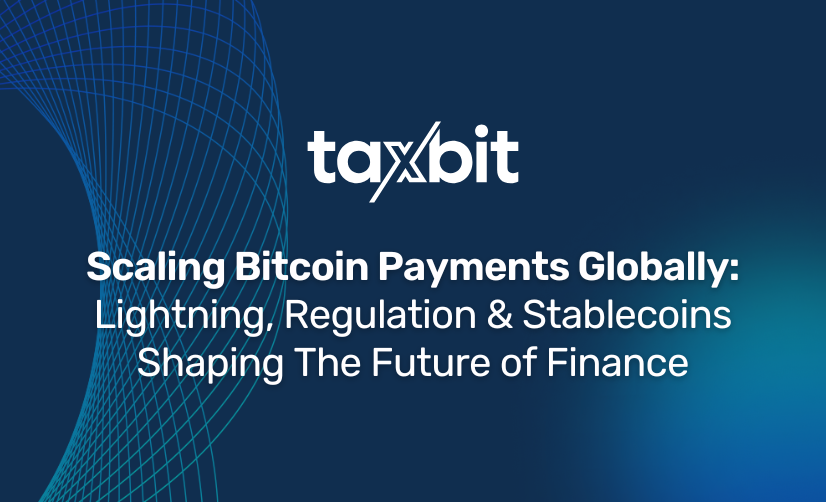Bitcoin’s evolution from an experimental “store of value” to a viable payments network hinges on a confluence of technological advances, shifting regulations, and the strategic decisions of enterprises and investors. In this blog, we’ll explore:
Why long-term BTC exposure, decentralized strategies, and venture investment are reshaping the next chapter of Bitcoin-native finance.
What it takes to scale Bitcoin payments globally, focusing on layer-two solutions and user experience.
How regulatory shifts—especially around cryptocurrency tax treatment and stablecoins—could accelerate (or hamper) adoption.
The Fee Problem on Bitcoin’s Base Layer
Bitcoin’s on-chain settlement is famously secure but can become prohibitively expensive when the network is congested. As one executive put it, “You pay a miner fee to get your transaction confirmed on-chain. That can spike to really expensive levels.” This means that if you want to buy a cup of coffee with on-chain BTC, you might end up paying more in fees than the cost of the coffee itself—a clear barrier to consumer adoption.
Lightning Network: Layer Two to the Rescue
The Lightning Network (Lightning) is a layer-two protocol built atop Bitcoin that addresses both speed and cost. In Lightning, two parties open a “payment channel” via a single on-chain transaction; once that’s done, they can send and receive potentially thousands of transactions off-chain, settling only the net result back on-chain when they close the channel. As Graham Krizek, Chief Executive Officer & Founder, Voltage explained:

In practice, Lightning transactions typically settle in under one second, with fees so low they’re virtually imperceptible compared to a standard Bitcoin on-chain fee, which can exceed $30 during peak congestion. The implications for retail and micro-payments are profound:
- Instant Settlements: Transactions happen near‐instantly (≤ 1 second), which is comparable to tap-to-pay credit cards—essential for consumer expectations.
- Minimal Fees: Even when fees exist, they rarely exceed a few satoshis (e.g., $0.001–$0.005).
- Scalability: Millions of transactions can be routed through the network without repeatedly congesting Bitcoin’s base layer.
In fact, some users already choose Bitcoin over other “instant” blockchains purely because of Lightning’s cost advantage. As one panelist noted, “Even on networks like Solana, the ultimate settlement time is far longer than Lightning’s sub‐second no‐fee payments.”
The Challenge of User Experience
Despite Lightning’s technical promise, user experience (UX) remains a major hurdle. Setting up a Lightning node, funding channels, and managing liquidity is still too complex for the average consumer. Pat Lowry, Chief Executive Officer, Samara underscored this gap:

UX friction not only dampens consumer enthusiasm but also hinders merchant adoption. For mass adoption, wallets need to abstract away the complexities of channel management. Custodial Lightning wallets (where a service manages channels on your behalf) help address this but introduce trade‐offs around counterparty trust. Non‐custodial solutions, meanwhile, preserve Bitcoin’s “you control your keys” ethos but require more technical know‐how.
As the Lightning ecosystem matures, we’ll see more “one‐click” Lightning wallets—potentially integrated into existing banking or payments apps—so end users won’t know (or care) whether they’re transacting on Layer 1 or Layer 2. The easier that transition, the more Bitcoin payments can scale globally.
Regulatory Shifts and the Compliance Imperative
Bitcoin as Property: Tax Implications for Spend
In most jurisdictions (notably the United States), Bitcoin is classified as property rather than currency. That means every time you “dispose” of BTC—whether by selling, trading, or spending—there’s a taxable event: you must calculate capital gains or losses based on your cost basis versus the fair market value at the time of disposition. As Aaron Jacob, VP of Accounting Solutions, Taxbit explained:
“When you acquire cryptocurrency, you need to track your cost basis. When you spend or sell it, you realize a gain or loss. You then report that difference for tax purposes.”
This “every‐spend‐is‐taxable” paradigm significantly complicates everyday spending. For a merchant accepting Bitcoin, it isn’t just receiving a new form of payment—they must track cost basis for each micro‐transaction, manage lot identification, and support real‐time reporting for their accounting and treasury systems.
“When a Fortune 50 company explored accepting stablecoins, their treasury team immediately raised red flags: ‘How do we reconcile an invoice in USD versus a stablecoin versus the eventual fiat conversion?’ Multiple reconciliations become necessary, from invoice to stablecoin/crypto receipt, from crypto to fiat conversion, and so on.” - added Jacob.
In short, regulatory clarity and better tooling (e.g., integrated crypto‐accounting software) are essential for wider merchant adoption. As regulations evolve—and new guidance around stablecoins or held‐for‐business can simplify reporting—compliance burden will ease. But until then, accounting complexity remains a drag on Bitcoin’s utility as a payments network.
Stablecoins on Bitcoin: A “Bridge” to Lower Volatility
Another regulatory hotspot is stablecoin legislation. In the United States and Europe, several bills are advancing to create a framework for asset‐backed stablecoins (e.g., USD-backed, fully audited reserves).

If U.S. regulators establish clear rules around reserve requirements, auditing, and redemption rights, stablecoins on Lightning (or on a Bitcoin sidechain) can flourish. Why does this matter?
- Universal Unit of Account. Merchants can denominate invoices in USD (or EUR) while settlement occurs instantly over Bitcoin’s rails. The payer doesn’t have to worry about BTC’s price swings; the merchant knows they’ll end up with a stable USD-equivalent.
- Cross‐Border Efficiency. International wire transfers today can take 2–5 business days and cost 1–3 percent in fees. A USD-backed stablecoin on Lightning can settle in under one second for near-zero fees—transforming payroll, supplier payments, and remittances.
- Lower Counterparty Risk. If the stablecoin issuer holds audited reserves, businesses don’t need to convert to fiat immediately—lowering credit‐risk concerns in jurisdictions with limited on‐ramps.
As one Lightning‐focused founder observed, “Lightning with stablecoins (via the Tapscript upgrade) means I can generate an invoice denominated in USDT and receive Bitcoin automatically, or vice versa. It’s seamless, and the user never knows the difference.” In a world where BTC-to-stablecoin swaps can occur instantly, merchants benefit from Bitcoin’s decentralization while maintaining price‐stability in their home currency.
Long-Term BTC Exposure, Decentralization, and Venture Investment
Institutional Bitcoin Treasuries: A Store-of-Value vs. Payments Tension
Over the past few years, publicly traded companies—from MicroStrategy to Samara Aztec Group—have added Bitcoin to their treasuries as a hedge against inflation.
“We raised $21 million in a Bitcoin bond and deployed it directly into Bitcoin. We view BTC as our primary treasury reserve asset.” - added Lowry.
However, this “philosophy of holding" creates a tension between Bitcoin’s role as “digital gold” versus “peer-to-peer cash.” If every company and individual treats BTC as a long-term appreciation asset, few people or firms will spend it.

To reconcile this, some firms are experimenting with hybrid strategies: hold a core BTC reserve (store-of-value) while routing day-to-day payments and payroll through stablecoins on Lightning (medium-of-exchange). In effect, they create a treasury “ladder”: BTC for long-term reserve, stablecoins for operating liquidity. This dual approach maintains exposure to BTC’s upside while enabling seamless payments.
Decentralized Infrastructure: Non-Custodial Wallets & Sidechains
For true Bitcoin payments at scale, decentralization can’t be an afterthought. Relying on a centralized Lightning custodian or traditional stablecoin issuer imports counterparty risk. Hence, there’s growing interest in:
- Non-Custodial Lightning Wallets. Users control private keys and payment channels. Solutions like LND, c-lightning, and Eclair have matured, and end-user apps are abstracting away channel management.
- Bitcoin Sidechains for Stablecoins. Projects like the “LSidechain” (an emerging protocol) let stablecoins (e.g., USDT, USDC) be issued and transferred natively on a sidechain pegged 1:1 to Bitcoin. This preserves Bitcoin’s final-settlement security while enabling asset issuance optimized for payments.
- Cross-Chain Atomic Swaps. Trustless atomic swaps between BTC and stablecoins let wallets automatically convert on the user’s behalf. Invoices can be generated in USD, but the payer’s wallet can atomically swap BTC for USDT just before settling—shielding both parties from price swings without a centralized exchange.
By combining non-custodial Lightning with sidechain-based stablecoins and atomic-swap capabilities, developers can build truly decentralized payment apps where end users never “leave” the Bitcoin economic sphere.
Venture Investment: Fueling the Next Wave of Innovation
Venture capital has poured billions into building the Bitcoin “stack”—the full suite of infrastructure from Layer 1 to application-level services. Key areas attracting capital include:
- Lightning Infrastructure Providers. Companies that operate large node clusters, liquidity-routing services, and merchant‐onboarding SDKs.
- Bitcoin Payment Gateways. Services that help e-commerce sites, brick‐and‐mortar retailers, and remittance firms accept BTC and stablecoins without worrying about custody or compliance.
- DeFi on Bitcoin. Although Ethereum dominates decentralized finance, a new wave of DeFi projects (DEXes, lending protocols) is emerging on Bitcoin sidechains or protocols like SBP (Simplicity-based) to enable lending, yield, and derivatives directly using BTC as collateral.
- RegTech & TaxTech. Companies like Taxbit are scaling their crypto‐accounting platforms to serve global enterprises, ensuring they can accept crypto payments while remaining compliant with local tax laws.
Many venture funds view the next 3–5 years as a “boom cycle” for Bitcoin‐native applications.
“We see Bitcoin not just as a treasury reserve, but as a payments rail. Our investments in Lightning startups and stablecoin sidechains underscore that view. Building infrastructure now means when regulation and UX converge, we’ll be ready for mass adoption.” - added Lowry.
Looking Ahead
Over the next five years, we’ll see meaningful progress in three areas:
- Regulatory Clarity: Clearer stablecoin frameworks in the U.S. and EU will make USD-pegged tokens on Bitcoin sidechains or Lightning a go-to option for cross-border trade.
- Lightning Maturity: “One-click” Lightning wallets will become standard in mobile apps, so users won’t notice whether they’re sending a bank transfer or a Lightning payment.
- Enterprise Adoption: Major retailers and e-commerce platforms will routinely offer BTC or stablecoin checkout, with automatic conversion tools that let merchants get fiat if they prefer.
Looking out ten years, Bitcoin’s payments ecosystem will have evolved further:
- A Circular Bitcoin Economy: Corporate payrolls, B2B invoices, and everyday purchases could be denominated in BTC (or instantly swapped to stablecoins), creating a true “circular” value flow within the network.
- CBDC Interoperability: Central bank digital currencies will coexist alongside private stablecoins on Bitcoin sidechains, with the latter powering cross-border corridors—especially in regions where traditional banking is fragmented.
- DeFi on Bitcoin: Trustless lending, insurance, and derivatives markets on Bitcoin-linked sidechains will rival (and perhaps surpass) Ethereum-based DeFi, thanks to Bitcoin’s security and network effects.
Ultimately, the pace at which Bitcoin shifts from “digital gold” to a seamless, global payments network depends on four interlocking factors: on-chain security, layer-two scalability, regulatory clarity (especially around tax and stablecoins), and continued venture-backed innovation. As Lightning and sidechain technology drive down cost and latency, and as user experience and compliance tools improve, Bitcoin will no longer be a niche store of value but a fully functional, borderless payments rail.
.png)


